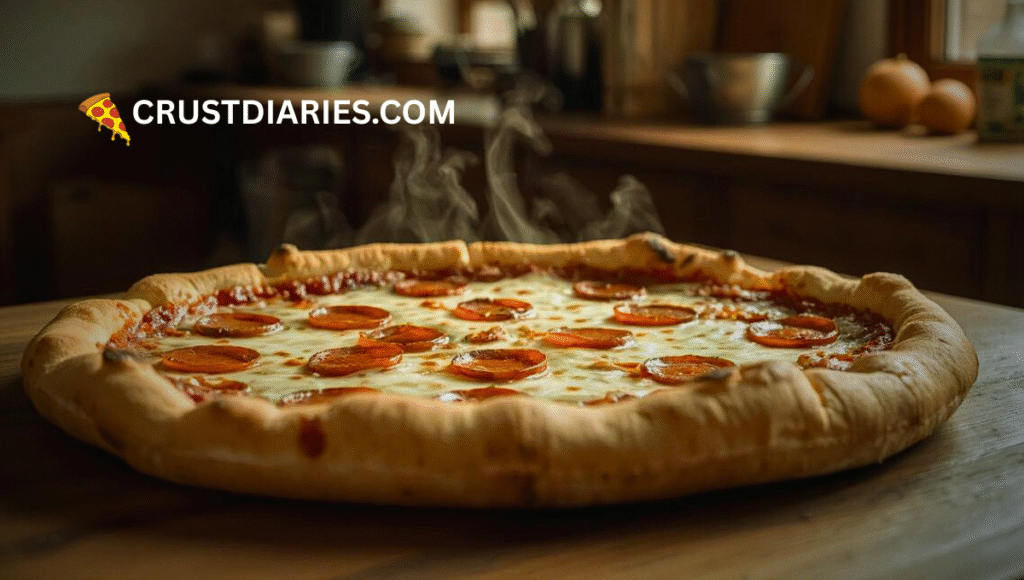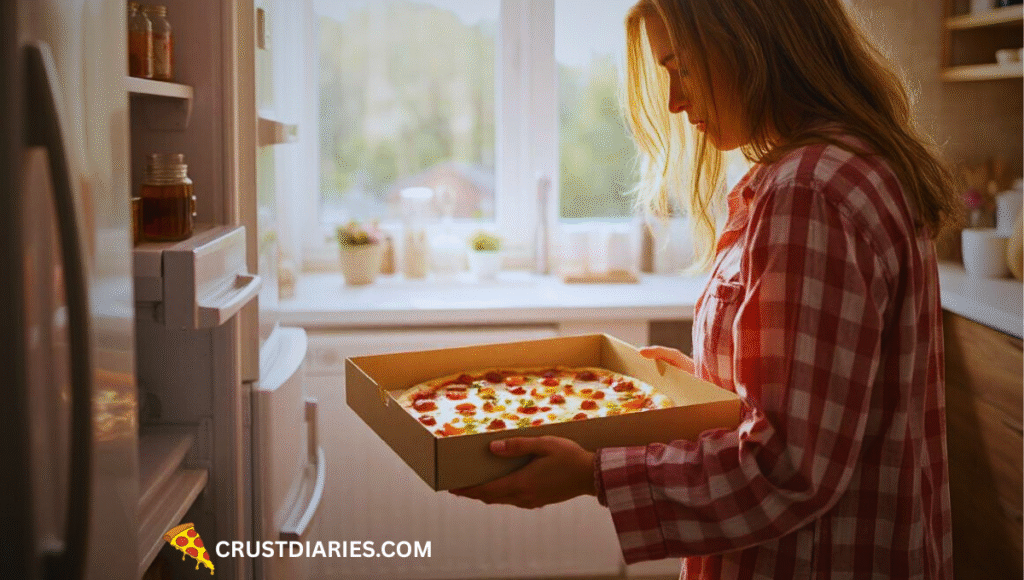Almost in everyone heart leftover pizza has a special place. Now a days most of the people waking up, and grabbed a pizza slice straight from the frdige, it feels more satisfying than a hot slice
Let’s explore the food chemistry, psychology, storage safety, and expert tips that explain why cold pizza often tastes so good.
The Food Science Behind Cold Pizza

1)How Flavors Change When Pizza Cools
When take out fresh pizza from the oven, its intense heat enhances the acidity oilness and arome, After cooling?
- The acidity of tomato sauce is lost
- The cheese fast strong, reduces greasiness.
- The herb and spices settle into the crust
Together, these changes give cold pizza a more balanced less overwhelming flavor
2)Retrogradation and Crust Texture
As the pizza cools the strach in the crust recrystallizes, a process where the strach molecules recrystallize. This make the crust firmer and chewier, giving the cold pizza its distinct bite
Certain Foods Taste Better with Time:
Pizza joins the list of foods such as curry, lasagna, and stew that taste even better the next day. why?
- The flavor blend and mature overnight
- The spices become light and balanced
- The sauce thickens and the moisture redistributes
That is why your refrigerator often becomes a flavor enhancing machine
Cold Pizza and Your Brain:

Comfort Food Psychology:
- Pizza is already considered a comfort food. Eating it cold adds to the novelty and nostalgia, many people associate with it with college mornings, late night snacks, or lazy weekends
Nostalgia Boosts Flavor:
- Scientists says that our brain enhance the taste of foods associate with positive memories, for many people cold pizza is one of those nostalgic memories
What Happens to Cheese, Crust, and Toppings Overnight:
Its fine to enjoy cold pizza, as long as you follow safety rules:
- Fridge life: Pizza last 3 to 4 days in the refrigerator (USDA)
- Room temperature rule: Toss pizza that has been left out for more than 2 hours
- Frezer option: Frozen slices lasts for up to 2 months without any major loss of quality
Tip: If in doubt, throw it out.
Cold vs. Reheated Pizza — Which Wins?
- Cold pizza lovers: Prefer mild flavors and no hassle for reheating
- Hot pizza fans: Want crispy crust and gooey cheese again
Best Reheating Methods (Pro Tips)
- Skillet/Griddle: Restores cripiness without drying
- Oven (375°F / 190°C for 10 minutes): Best for multiple slices
- Air Fryer: Fast and crispy.
Avoid microwaving unless you like wet crust.
The Cultural Love for Cold Pizza (Unique Angle):

- Student Survival Food: Cold pizza has fueled counted college mornings
- Pop Culture Icon: Character in movies and memes are often shown eating cold pizza
- Global trend: From the US to Europe, cold pizza is universally loved leftover
Best Ways to Store Pizza for Next-Day Awesomeness:
- Use Airtight containers insted of leaving it in a box
- Place wax paper or parchment between the pieces to prevent sticking
- Wrap slices in foil for freezer storage
- Reheat frozen pizza straight in the oven no thawing required
Final Bite — Why Cold Pizza Will Always Have Fans:
Whatever you like hot or cold pizza, Pizza is most liked in food chemistry, overnight its flavor mellow crust changes, the texture and the toppings blend in harmony, add convience nostalgia and food safety awareness and its not wonder that cold pizza has an almost cult like following





Pingback: 🍕How long can pizza last in the fridge?🧊 Best Tips and tricks
Pingback: Peri Peri Pizza | Homemade & Nando’s Style Spicy Pizza